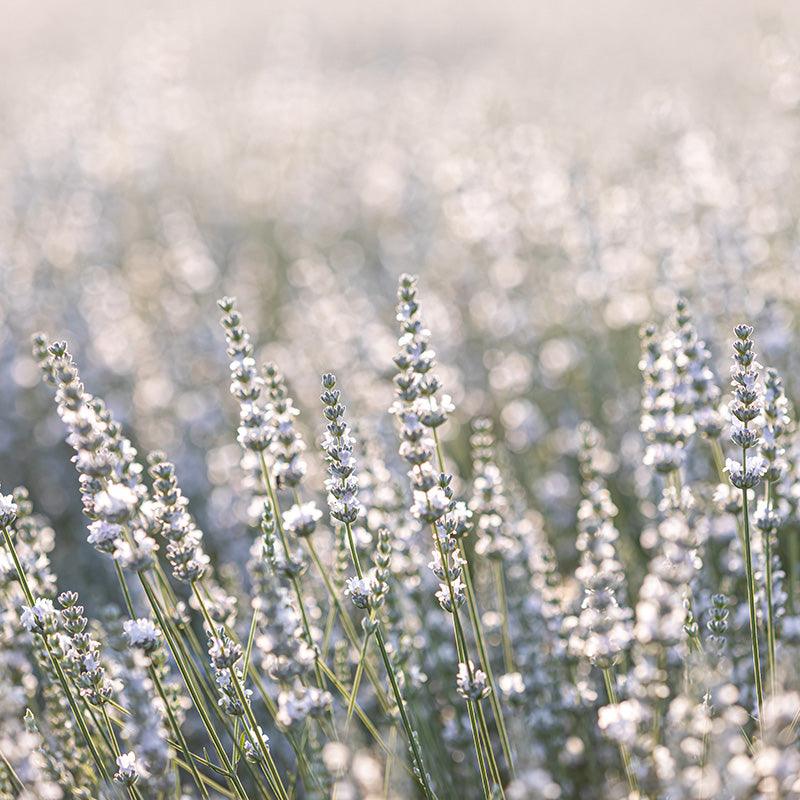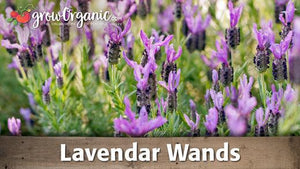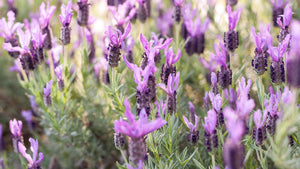Item Number: PV154
Organic Arctic Snow Lavender
Arctic White Elegance in Bloom
Arctic Snow Lavender, scientifically known as Lavandula angustifolia 'Arctic Snow', is a stunning cultivar of the popular lavender plant. Renowned for its compact growth habit, aromatic foliage, and beautiful white flowers, Arctic Snow Lavender is a delightful addition to any garden.
Sustainably grown in 2.75" pots
Choosing the Right Location
When selecting a location for Arctic Snow Lavender, it's essential to choose a spot that receives full sunlight for at least 6 to 8 hours per day. This ensures optimal growth and flowering. Additionally, ensure the soil is well-drained to prevent waterlogging, as lavender plants are susceptible to root rot in soggy conditions. Arctic Snow Lavender thrives in slightly alkaline to neutral soil with a pH level between 6.0 and 7.0. If your soil is too acidic, consider amending it with lime to raise the pH level.
Planting Arctic Snow Lavender
Transplant starts outdoors after the danger of frost has passed, spacing them 12 to 18 inches apart to allow for adequate airflow. Plant them at the same depth as they were in their nursery pots and water thoroughly after planting.
Watering and Care
Once established, Arctic Snow Lavender is relatively drought-tolerant and requires minimal watering. Water newly planted starts regularly to help them establish strong root systems, then gradually reduce watering frequency as the plants mature. Avoid overwatering, as lavender plants are susceptible to root rot in waterlogged soil. Instead, water deeply but infrequently, allowing the soil to dry out between waterings. Mulching around the base of the plants helps retain soil moisture and suppresses weed growth.
Fertilizing
Arctic Snow Lavender is not a heavy feeder and generally does not require frequent fertilization. However, you can apply a balanced, slow-release fertilizer in early spring to provide essential nutrients for healthy growth and flowering. Avoid using high-nitrogen fertilizers, as they can promote lush foliage at the expense of flowers. Monitor the growth of your Arctic Snow Lavender plants and adjust fertilization as needed based on their performance.
Pruning and Maintenance
Regular pruning helps maintain the compact growth habit and promotes abundant flowering in Arctic Snow Lavender. Prune the plants lightly in early spring to remove any dead or damaged foliage and encourage new growth. After the first flush of flowers has faded, trim back the spent flower stems to promote reblooming. Avoid cutting into old wood, as this can damage the plants and inhibit regrowth. Additionally, prune Arctic Snow Lavender plants lightly in the fall to tidy up the foliage and prepare them for winter dormancy.
Pest and Disease Management
Arctic Snow Lavender is relatively pest and disease-resistant, but it may occasionally encounter problems such as aphids, spider mites, or fungal diseases. Monitor your plants regularly for signs of pest infestations or disease symptoms, and take appropriate action to control them. Insecticidal soap or neem oil can help eliminate aphids and other soft-bodied pests while pruning away affected foliage can prevent the spread of fungal diseases. Proper spacing and good airflow also help reduce the risk of pest and disease problems.
Overwintering
In regions with cold winters, Arctic Snow Lavender may require protection from freezing temperatures. Apply a layer of mulch around the base of the plants in late fall to insulate the roots and protect them from frost damage. Alternatively, you can grow Arctic Snow Lavender in containers and overwinter them indoors in a cool, bright location until spring. With proper care and protection, Arctic Snow Lavender can survive winter temperatures and thrive for many years in your garden.
Arctic Snow Lavender is a beautiful and versatile herb that adds fragrance, color, and texture to any garden. By following the guidelines outlined in this guide and providing proper care and attention, you can cultivate healthy Arctic Snow Lavender plants that will delight your senses and enhance your outdoor space. Whether used for culinary purposes, aromatherapy, or ornamental value, Arctic Snow Lavender is a valuable addition to any garden.




Check Your Zone Compatibility:
Compatible with your zone.
Growing Zone for

Our Guarantee To You
Since 1976, we've served our customers at every stage of growing. Please contact us at any time. We are happy to support and assist you.
Shipping Information
Shipping Information
Cannot ship to the following states: AK, HI, PR, VI, GU
Shipping Weight: 0.5 lb
Features
Features
- Attracts Bees/Butterflies
- Container Compatible
- Does Not Require Support
- Drought Tolerant
- Edible Flower
- Fragrant
- Good Cut Flower
- Good for Drying
- Heat Tolerant
- Heirloom
- Long-Lived
- Open-Pollinated
- Somewhat Drought Tolerant
- Suited to Warmer Climates
Characteristics
Characteristics
Planting & Care
Planting & Care
Soil & Water: Grow in well-drained soil with average fertility.
Planting: Plant starts in late spring or early summer, once the soil has warmed up to at least 60°F (21°C). Space plants 2 feet apart.
Growing: Plants flower lightly during the first season and come into full bloom in their second summer. After the blooming season, prune and shape the plants while cutting off spent flower stalks. If their requirements are met, these sturdy plants will take more humidity than other lavenders.
Useful Information
Useful Information
Guarantee
Guarantee
We guarantee the perishable items we sell to be in good, viable condition when we sell them. Perishable items include, but are not limited to, garlic bulbs, flower bulbs, seed potatoes, onion sets & transplants, potted or bare root trees, vegetable crowns, etc. If your perishable item arrives in substandard condition, take photographs and please contact us within 3 days of the purchase date (or delivery date) and we will provide you with a refund of the purchase price (excluding shipping costs), or a replacement. Accordingly, we urge you to open any boxes marked as ""Perishable"" immediately upon receiving them and inspect the shipment thoroughly (do not crack open heads of garlic, we do not accept claims on cracked garlic). Because some perishable items can deteriorate very quickly, we cannot accept any claims beyond the 3-day time frame as it becomes too difficult to determine if these items were delivered in substandard condition, or if they turned into such substandard condition because of having been improperly cared for or stored once delivered.
Share




